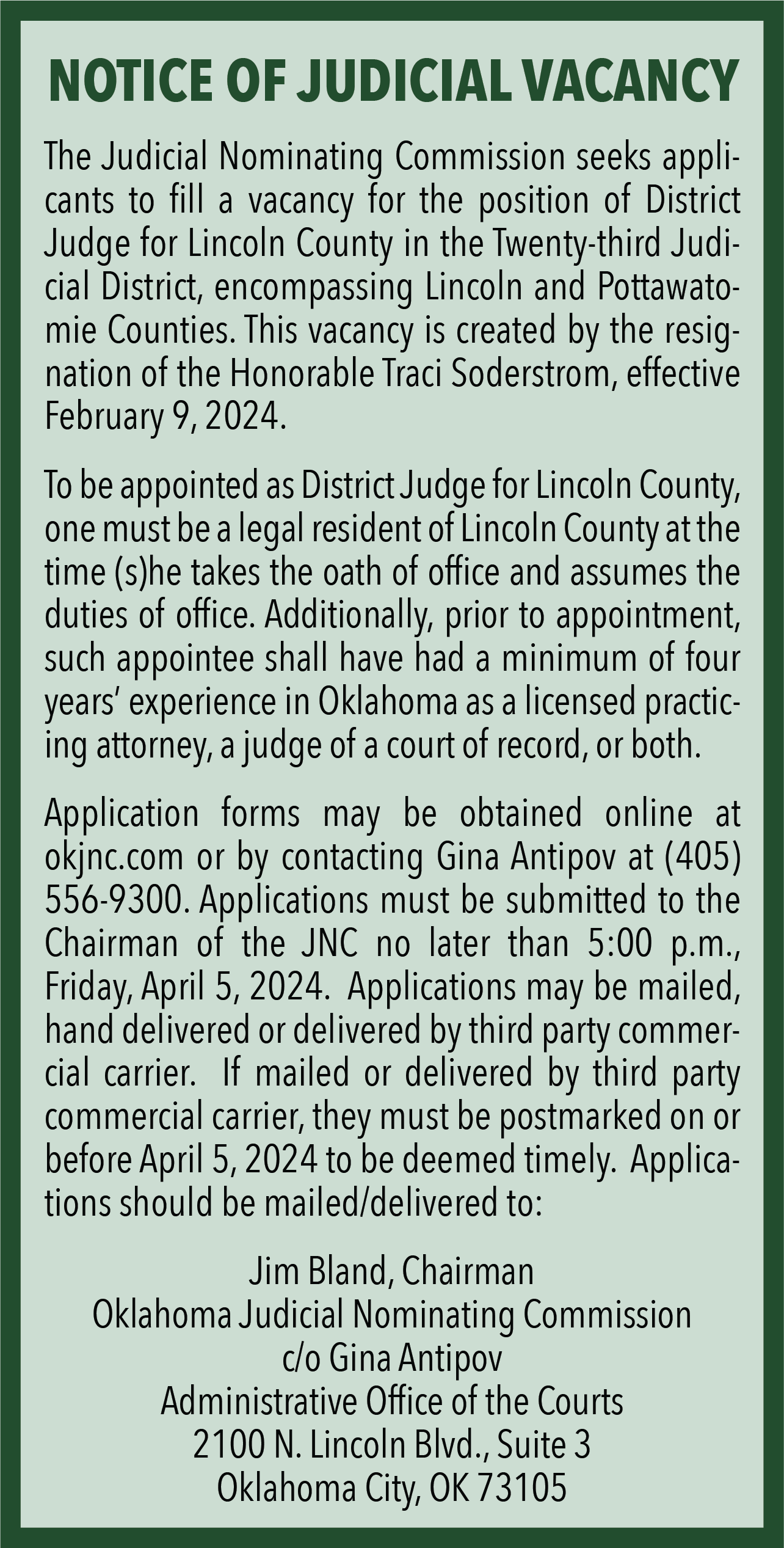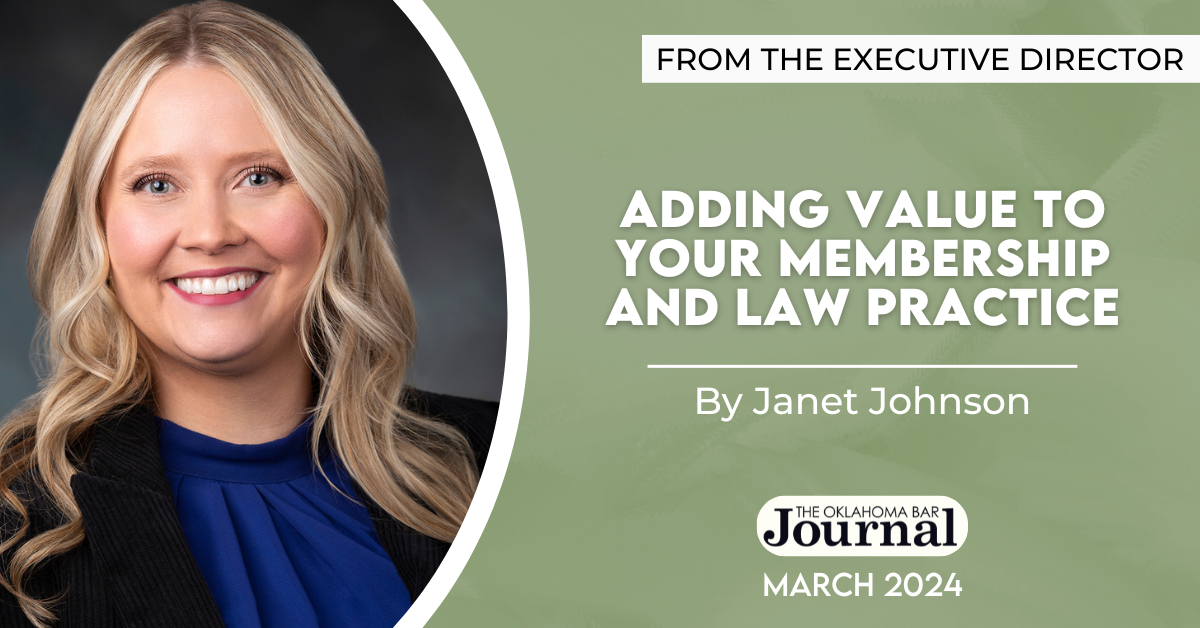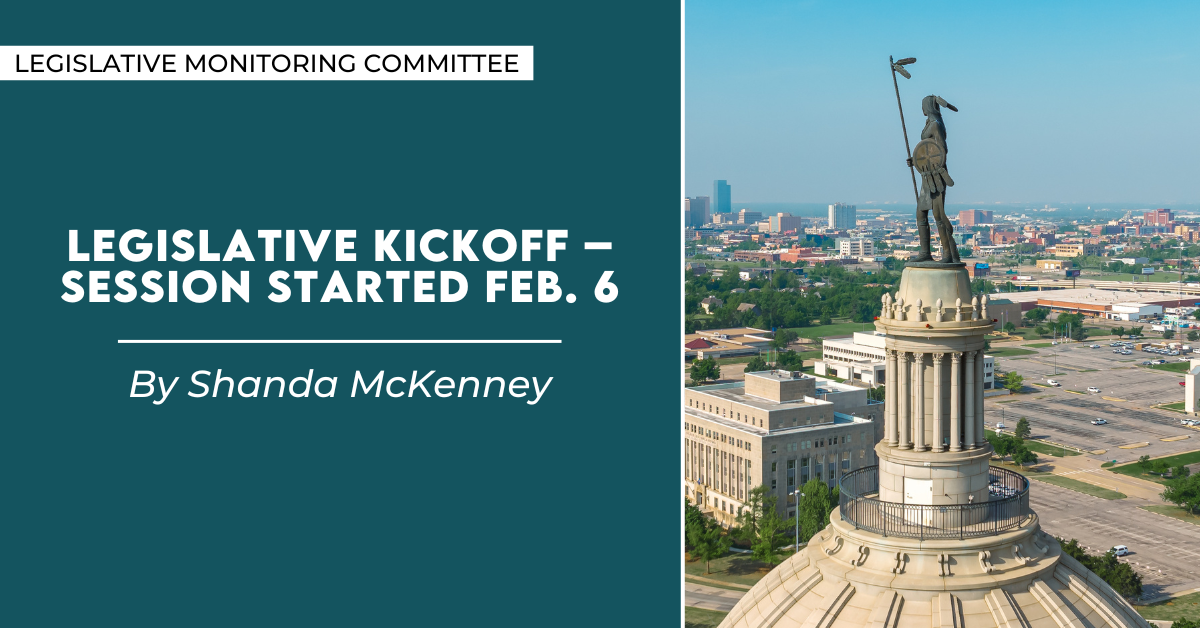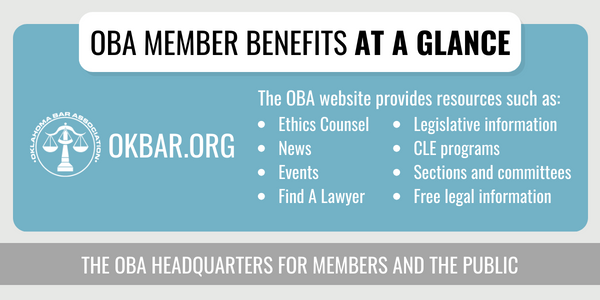Courts
- 2024 OK 16: RE SUSPENSION OF CREDENTIALS OF CERTIFIED AND REGISTERED COURTROOM INTERPRETERS
- 2024 OK 17: BROWN v. DEMPSTER
- 2024 OK 18: IN THE MATTER OF THE REINSTATEMENT OF TAYLOR
- 2024 OK 19: SCHIEWE v. CESSNA AIRCRAFT CO
- 2024 OK CR 3: STATE v. BRADFORD
- 2024 OK CR 4: STATE v. FULLER
- 2024 OK CR 5: IN RE ADOPTION OF THE 2024 REVISIONS TO THE OKLAHOMA JURY INSTRUCTIONS-CRIMINAL (SECOND EDITION)
- 2024 OK CR 6: IN RE ADOPTION OF THE 2024 REVISIONS TO OKLAHOMA UNIFORM JURY INSTRUCTIONS-CRIMINAL (SECOND EDITION)
- 2024 OK CIV APP 11: NORTH STAR MUTUAL INSURANCE CO. v. ZIELNY
Dispositions Other than by Published Opinions
The Supreme Court of Oklahoma Court Calendar
The Supreme Court of Oklahoma is in session year round, unless otherwise noted. The court regularly schedules conferences on Mondays and other days as needed.
Member Transitions
More
"When answering the question, 'What is animal law?' the best place to start is by looking at the history of animals and the law. Laws protecting, impacting, regulating and controlling animals have been an integral part of American jurisprudence since the early days of colonization. One only needs to cross the ocean to see that laws were in place in England for the same purpose well before colonization.
However, the distinct field now known in America as 'animal law' is a relatively new development, even though we are still saddled with some of history’s archaic laws involving animals. Animal laws bring together statutes and cases from multiple fields of law that consider, at their core, the interest of animals or the interest of humans with respect to animals. More specifically, historically, animal law cases literally placed the nonhuman on trial. In the Middle Ages, nonhuman animal defendants were dressed in formal wear and tried for murder, and notably, they were assigned counsel. A very early case dates from 1266 in Fontenay, France, where a pig was tried and burned to death for eating a child. The earliest known case is found in the Valley of Aosta in 824 when a priest excommunicated moles."
"Animal law – it has been taught in more than 167 law schools in the U.S. and Canada. At the time this article was written, two of the three law schools in Oklahoma offered at least one course involving animal law. An LL.M. and an S.J.D. are available in animal law, and there are several academic programs, clinics and centers on the topic worldwide. The American Bar Association and at least 35 state bar associations (including Oklahoma) have a committee or section dedicated to animal law, but what exactly does the practice of animal law look like?
The following article is an interview with Katie Bray Barnett. Ms. Barnett is the immediate past chair of the ABA Animal Law Committee (ALC) of the Tort Trial & Insurance Practice Section and is licensed to practice law in Kansas and Missouri. She has been a member of the ALC since she was a law student and is now in her 12th year as a member. Her private practice consists entirely of animal law matters, representing animal shelters and animal control agencies, acting as special prosecutor for animal-related crimes and civil actions for animal-related issues. She resides in northeast Kansas with her husband, two children and two dogs."
"In the ever-evolving practice of law, staying current with the latest developments and building a network of like-minded professionals is crucial for success. One effective way for lawyers to achieve this is by becoming a member of practice-specific sections within the OBA. We have 30 substantive sections, and becoming a member will enhance your professional development and add substantial value to your membership. Need more convincing? OK, let me count the ways, but by all means, this is not meant to be an all-inclusive list."
"The OBA Legislative Monitoring Committee is committed to bringing laws and legislation of particular interest to attorneys and their clients to the attention of the membership at large. Any OBA member can join the committee, just submit a request via the OBA’s website at www.okbar.org/committees/committee-sign-up. Receive committee updates via the Communities page, which is where the tracking list of introduced legislation exists for the 2024 legislative session. The mission of our committee is education and awareness without editorializing the issues or taking positions on pending legislation. A democratic republic functions best when the electorate is as well-informed as possible about the issues. Please take a moment to review the list of bills we’ve provided, and let your legislator know if you have any personal input on pending matters."
Register now for the annual OBA Day at the Capitol set for Tuesday, March 26. Registration begins at 9:30 a.m. at the Oklahoma Bar Center in Oklahoma City with a visit to the state Capitol planned for the afternoon. Approved for 3 hours general MCLE credit. Click here for online registration.
The OBA Celebrates Women's History Month
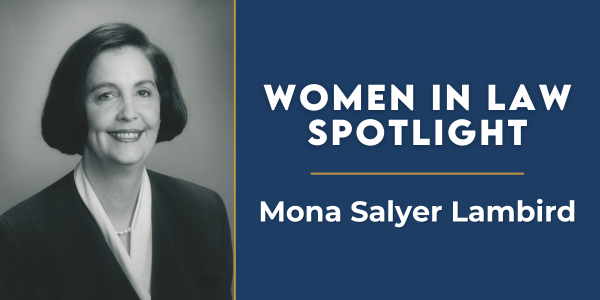
In celebration of Women's History Month, we look back to the first woman to serve as president of the OBA.
Mona Salyer Lambird received her LL.B. from the University of Maryland Law School, where she was one of three women in a class of 100. Ms. Lambird was heavily involved in the OBA, serving in leadership positions for various conferences and committees. She was the second woman elected to the OBA Board of Governors, serving from 1992 through 1994 before being elected and sworn in as OBA president in 1996. She was honored as the 1969 Journal Record Corporate Woman of the Year, inducted into the Oklahoma Women's Hall of Fame in 1995 and received the Oklahoma City Public Schools Foundation's Wall of Fame Humanitarian Award. Ms. Lambird is one of the many inspiring Oklahoman women in law who has had a role in paving the way for future generations.
The OBA Women in Law Conference celebrates and supports women in the legal profession like Ms. Lambird. Save the date for this year's conference on Friday, Sept. 20!
Women's History Month Special: Buy one, get one free of Leading The Way: A Look at Oklahoma's Pioneering Women Lawyers, a book that celebrates the achievements of Oklahoma's women attorneys. The book was published in 2003. The price is $55 (plus shipping) for the two books. To get your copies, email Communications Director Lori Rasmussen.
Visit www.okbar.org, the OBA's online headquarters. Valuable information – such as upcoming CLE programs, LHL meetings, information about sections and committees and more – is available on the website. Members can also access issues of the Oklahoma Bar Journal, OBA Classifieds, news and more.
Featured CLE
By OBA MAP Director Jim Calloway
Last week in this space, OBA Practice Management Advisor Julie Bays passed along a warning from consultant Barron Henley that if you don’t exercise care, Microsoft’s AutoSave feature can overwrite your form before you can click “Save As.”

Catherine Sanders Reach, director of the North Carolina Bar Association’s Center for Practice Management, wrote a lengthy post related to this topic titled "Avoid Overwriting Documents." But Ms. Reach also goes into detail about how lawyers need to be using Microsoft Word templates. If you are a lawyer who has never created or used a template, this is strongly recommended for you. If the first thing you do when opening a new blank document is manually change the font to something you like better, you need to modify your Normal template (Normal.dotm) so that the font you prefer is the default. When you file your first pleading in a litigation matter likely to generate many filings, create a template named “X Client Pleading” with the case caption, appropriate signature block and certificate of mailing. Place that template where everyone in the office can use it to speed up the drafting process. If there is a substitution of counsel, then amend the template. Ms. Reach's post is good to share around your office.
The Oklahoma Bar Journal is a publication of the Oklahoma Bar Association. All rights reserved. Copyright© 2024 Oklahoma Bar Association. Statements or opinions expressed herein are those of the authors and do not necessarily reflect those of the Oklahoma Bar Association, its officers, Board of Governors, Board of Editors or staff. Although advertising copy is reviewed, no endorsement of any product or service offered by any advertisement is intended or implied by publication. Advertisers are solely responsible for the content of their ads, and the OBA reserves the right to edit or reject any advertising copy for any reason. Legal articles carried in The Oklahoma Bar Journal are selected by the Board of Editors. Information about submissions can be found at www.okbar.org.


